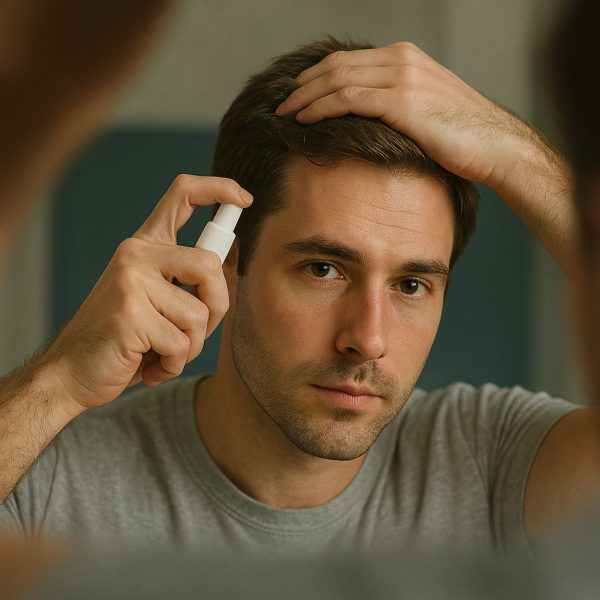
Male pattern baldness is the progressive thinning of hair in a defined pattern, generally beginning above both the temples. It frequently happens during someone’s late 20s and becomes more pronounced as men age.
However, hair loss is a gradual process and can be unnoticeable from the get-go. This is why James Hamilton devised a scale that can tell you the severity of hair loss you’re currently experiencing – before it’s too late to do anything about it.
This scale is called The Hamilton-Norwood scale and is used to determine the extent of male pattern baldness, on the basis of the type and size of the area involved.
The scale was developed in the 1950s by James Hamilton and then picked up by O’Tar Norwood in the 1970s. It also acts as a visual tool doctors and patients use to track the progression of the condition so they know what to expect next.
The Norwood Scale is broken down into the following stages:
Stage 1
In Stage 1, loss of hair is hardly noticeable and the hairline shows minimal recession. While it varies and is very uncommon, some men retain a Stage 1 hair pattern throughout their lives.
Stage 2
A slight recession begins to show in Stage 2. You can see the loss of hair begin at the temples and show early signs of the M, V, or U-shaped hairline.
Stage 3
As the scale progresses, the more visible the baldness becomes. Stage 3 displays a significant loss of hair at the temples and frontal area of the scalp and a pronounced M, V, or U-shaped hairline will begin to appear. Balding spots are going to start showing up as well.
Stage 3 Vertex also is common in men, wherein the hair loss starts at the crown or vertex.
Stage 4
Hair across the front of the scalp, crown, and temples are a lot thinner in Stage 4. Receding of the hairline appears more severe and a tiny band of hair separates the two affected areas of your scalp.
Stage 5
The band of hair in the middle of your head that connects to either side of your scalp will start to look narrower. This is also where the common ‘horseshoe pattern’ becomes more prominent. Hair loss is a lot more difficult to treat at this stage.
Stage 6
Stage 6 is where severe hair loss at the crown is going to be apparent. The bald spots at the temples will start to merge with your thinning scalp while that band of hair disappears.
Stage 7
Hair at the top of your head is completely gone at this stage and only a fine band remains across the sides of your scalp.
Ultimately, if you are concerned with hair loss, it’s always best to consult a doctor as soon as possible if you’d like to have it treated. Use the Norwood Scale as a reference and do not hesitate to discuss the possible treatments with a professional. Hair loss is a condition that affects many and it’s best to look out for early signs.































































